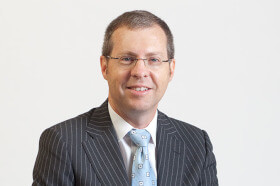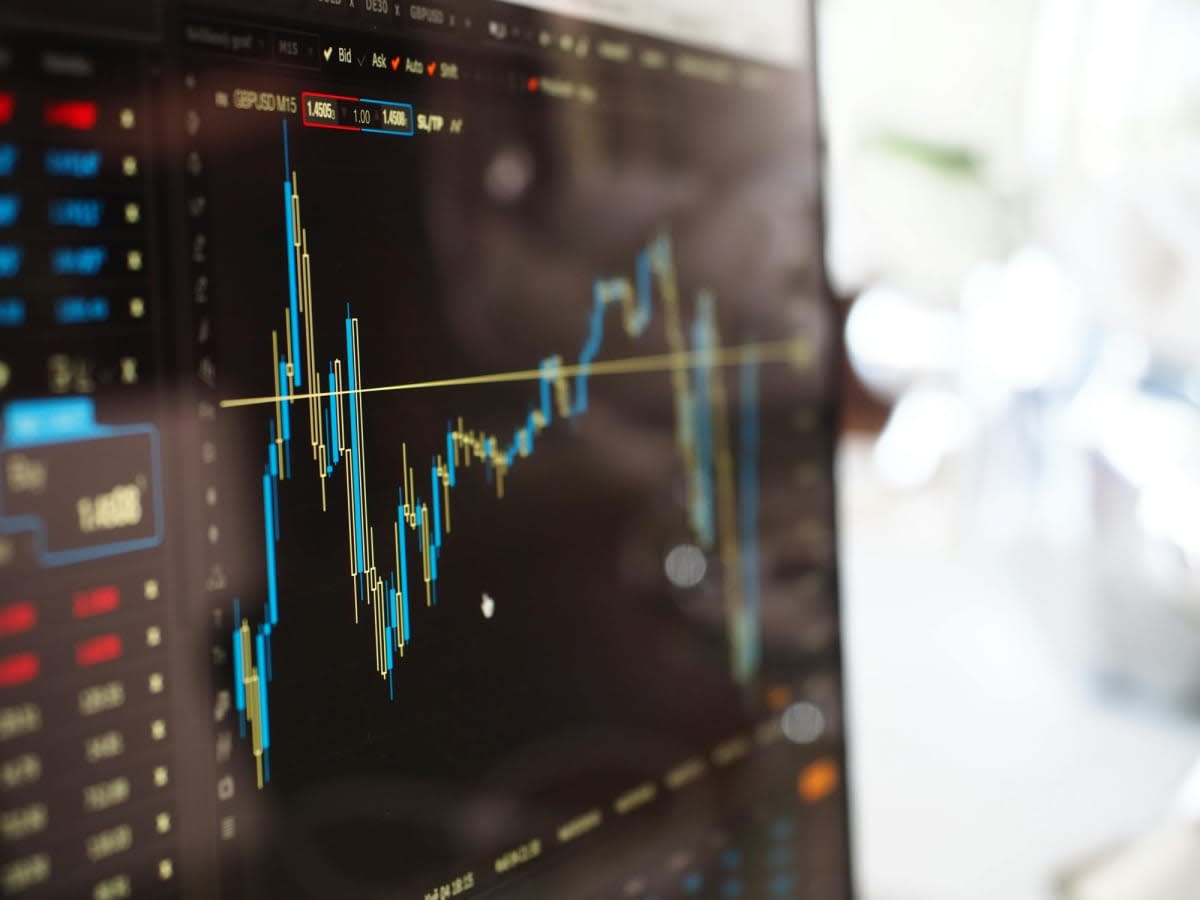Invest
The Travelling Economist: The US Fed and monetary policy
In part two of this three-part series, economist Stephen Halmarick examines the perspective of the world’s most influential central bank, and what investors can expect from US monetary policy.
The Travelling Economist: The US Fed and monetary policy
In part two of this three-part series, economist Stephen Halmarick examines the perspective of the world’s most influential central bank, and what investors can expect from US monetary policy.

The easiest part of my analysis of the US Federal Reserve from meetings in San Francisco, New York and Washington is that the path to higher interest rates will be very gradual.
My view remains unchanged that the Fed will raise the official Fed Funds target range to 0.5 to 0.75 per cent at the December Federal Open Market Committee (FOMC) meeting. One Fed watcher I spoke to implied that the Fed would be ‘embarrassed’ if they did not raise interest rates in December, much as they felt in December 2015.
Going forward, I expect two rate hikes each year in 2017, 2018 and 2019 – most likely in June and December – which will take the Fed Funds rate to around 2 to 2.25 per cent. Markets have a slightly lower path than this, while the Fed’s ‘dots’ remain more aggressive.
It was highlighted to me that the data on the real economy in 2016 was telling the Fed to be very careful in raising interest rates, because the economy is vulnerable to any tightening of financial conditions, either by higher interest rates and/or a stronger USD.

Perhaps a more hawkish interpretation of the 2016 data flow is that the potential economic growth rate for the US has declined to a lower level than expected, say around 1.5 per cent. This would make the case for higher interest rates, but only gradually and not by much.
The other key consideration for the US central bank in 2017 is whether or not there is potential for an easing of fiscal policy through next year and/or a substantially higher USD. This could come in the form of an economic stimulus package from President Clinton if she wins the election. The Fed would be very sensitive to these developments.
At this point in time, the consensus is for two rate hikes in 2017. But from the conversations I have had, there is more risk of one to two hikes next year than there is of two to three rate hikes.
The difficult part for the Fed's outlook is what the peak in interest rates is likely to be in this cycle, how this differs from previous cycles and whether targeting inflation at 2 per cent remains the best way for the central bank to help manage the US economy. This and a number of other issues were of great interest in my meetings in the US.
As evidenced by recent comments from Fed Chair Janet Yellen, the overriding view remains that if interest rates are held low for an extended period, the economic recovery in the US will deepen and broaden. This eventually, will see strength in the labour market translate into an upward trend for wages and inflation. The Fed already believes this is beginning to happen, citing statistics such as the Atlanta Fed’s wage index and core personal consumption expenditure inflation.
While opinions within the Fed differ on the exact timing and extent of the rate hikes to come, the view remains clear that a gradual upward path for US interest rates should be expected over coming years.
My expected peak in the Fed Funds rate of 2 to 2.25 per cent in late 2019 remains well below the Fed’s current long-run rate of 3.0 per cent, as indicated by the ‘dot’ forecasts in September 2016. However, this long-run ‘dot’ has been trending down for a number of years − from 4 per cent − and I would not be surprised to see further downward move in the months and years ahead.
While this may not occur at the December 2016 FOMC meeting, I would expect the rate hikes in 2017 and 2018 to also include further reductions in the expected long-run Fed Funds rate. In this regard, the tightening of monetary policy to come could be seen as ‘dovish rate hikes’, an increase in the current target rate, but a reduction in the expected long run rate.
It is also interesting to see the open discussion at the Fed on the neutral level of interest rates in the ‘new normal’ environment we find ourselves in. In the days prior to the Global Financial Crisis (GFC), the neutral real interest rate was considered to be around 2.5 per cent. Adding in a 2 per cent inflation target implied a neutral nominal interest rate of 4.5 per cent, which gave the Fed plenty of room to cut interest rates to support the economy in any downturn.
Now estimates of the neutral real interest rate, at least in some parts of the Fed, are around 1 per cent or lower. A 2 per cent inflation target, therefore, gives a neutral nominal rate for the Fed of close to 3 per cent − the current long-term rate assumed by the ‘dots’. However, some in the private sector are of the view that the neutral real Fed Funds rate could be even closer to zero, meaning a neutral nominal rate of just 2 per cent. This view is closer to mine. The concern is that such a low level of real interest rate gives the Fed limited options to ease monetary policy substantially in an economic downturn – interest rates are already so low in the good times − without having to resort to policy developments such as negative interest rates and/or quantitative easing.
One potential ‘solution’ to this problem is to have a higher inflation target, say 3.5 to 4 per cent, so that a low neutral real interest rate would still provide a neutral nominal rate of around 4.5 per cent.
Over time, this would hold monetary policy ‘easier’ than otherwise would have been the case, protecting the economy from downside risks, at least in theory. The highly regarded president of the San Francisco Federal Reserve, John Williams, has put this idea forward.
While thinking about the neutral rate of interest and the Fed’s inflation target is an interesting concept, it is fair to say that the Fed is a long way away from contemplating any change to their inflation target. Nevertheless, it has been stressed to me on this trip and previously − including by the Chicago Fed president, Charlie Evans, when he was in Sydney in October − that the Fed’s 2 per cent inflation target should be seen as an average and not a ceiling. In this way, the central bank’s inflation target is much more like the Reserve Bank of Australia's flexible 2 to 3 per cent average over time target than it is like the European Central Banks strict close to 2 per cent and no higher inflation target.
Overall, within the Fed, there looks to be an appetite to accept some overshoot on inflation a little above the 2 per cent target. In essence, to ensure inflation expectations are around 2 per cent over the medium-term, some overshoot may be required to offset the prolonged period of undershooting the inflation target. In other words, this is supportive of Ms Yellen’s ’high pressure economy’ strategy.
I also discussed in my meetings the idea that very low and/or negative interest rates could be counterproductive, especially given their negative impact on savers and the psychology of consumers. Most agreed that this was certainly a concern, especially for consumers and households. But we also agreed that one part of the economy that should not have their confidence to borrow and spend negatively impacted by ultra-low interest rates was the government. And so a much greater use of fiscal policy in the form of government borrowing for spending on productivity enhancing infrastructure and other investments was certainly a part of the economic recovery process that the Fed was looking for. This is, of course is not unique to the US as we have seen similar comments/developments in the UK, Europe, Japan, Canada and Australia.
From my discussions, it does also seem that one area the Fed is worried about, or at least conscious of, is the low level of bond yields, not just in the US, but around the world. The US central bank is thinking about what would happen to the bond market if the perception ever grew that it was ‘behind the curve’ in raising interest rates in the context of a higher inflation rate. This does not appear to be much of a risk in the near-term, but it is pleasing to see that the Fed is aware of the vulnerabilities of the bond market and the interplay between its own actions and those of bond market participants.
While the Fed could not comment directly on the US Election, not surprisingly, one aspect of the election that it is clearly concerned about − as am I − is the trend towards anti-globalisation. This, of course, is not a development unique to the US, but it does seem that the Fed, and most market economists, is concerned about the economic growth implications of a less trade-orientated and less-connected global economy. A further concern is that the US election could see further gridlock in Washington and little to no progress on important economic reform issues.
Another interesting development in the way the Fed thinks about the economy is the labour share of GDP versus the profit share. For much of the time since the GFC, the profit share of the US economy has been relatively high, while the labour (wages) share has been low. It was pointed out to me that the Fed may be inclined to hold interest rates relatively low in order to strengthen the labour market to the point where the wages share of the economy rises relative to the profit share. This could act to improve the level of income equality and is unlikely to be welcomed news to share market investors.
Finally, the Fed is also thinking about the economy of the future. What will be the interplay between technology and economic opportunity? For example, what happens to all the world’s taxi drivers once driverless cars come to dominate? This will likely be an important issue for those on relatively low-skilled and low-paid work.
For the Fed, the near-term outlook seems relatively clear − expect a rate hike in December 2016 − unless Trump wins the election and markets respond badly to this, and a gradual rate hike cycle in the years ahead.
The longer-term outlook is less clear. Expect to see further reductions in the long-run Fed Funds target, towards 2 to 2.5 per cent and an ongoing discussion of the neutral interest rate level.
Even further out, the Fed is thinking about the right target for monetary policy and the policy framework for the economy of the future. While this long-term policy thinking is unlikely to impact financial markets in most investment time horizons, it is pleasing to see that this work has begun.
Stephen Halmarick, chief economist, Colonial First State

Stock market
6K Additive secures A$48 million through initial public offering on the Australian Stock Exchange
6K Additive, a prominent player in the advanced metal powders and alloy additions market, has made a significant stride by successfully completing its Initial Public Offering (IPO) on the Australian ...Read more

Stock market
Institutional investors increase stock allocations to 18-year high amid cautious market shifts
In a recent development, State Street Markets unveiled the findings of its latest State Street Institutional Investor Indicators, revealing intriguing shifts in institutional investor behaviourRead more

Stock market
FOREX.com launches in Australia to empower self-directed traders
StoneX Group Inc. (NASDAQ: SNEX) has announced the Australian launch of FOREX.com, expanding access for self-directed traders to a global suite of Contracts for Difference (CFD) products across ...Read more

Stock market
Westpac and CMC Markets strengthen partnership to enhance online trading services
In a significant move that underscores the evolving landscape of online trading in Australia, CMC Markets Stockbroking has been chosen as the preferred vendor by Westpac Banking Corporation to extend ...Read more

Stock market
Portfolio reviews as an operating discipline: turning volatility into a competitive edge
In a higher-rate, higher-volatility world, portfolio reviews are no longer an annual hygiene task; they’re a core operating rhythm that protects cash flow, unlocks tax alpha, and sharpens risk ...Read more

Stock market
Fee war on the ASX: Global X’s A300 turns up the heat on core Aussie equity ETFs
Global X has lobbed a 0.04% management fee into Australia’s core equity sandbox, launching the Australia 300 ETF (A300) to take on entrenched giants. Read more

Stock market
Challenger IM shakes up the ASX with private credit note and a side of risk
Challenger Investment Management has taken private credit mainstream with an ASX-listed note structure—LiFTs—that secured roughly $100 million in cornerstone commitments within a day of launch. Read more

Stock market
International stocks: Diversifying your portfolio beyond Australia
In an increasingly globalized market, Australian investors have the opportunity to enhance their investment portfolio by incorporating international stocks. Diversifying your investments globally can ...Read more

Stock market
6K Additive secures A$48 million through initial public offering on the Australian Stock Exchange
6K Additive, a prominent player in the advanced metal powders and alloy additions market, has made a significant stride by successfully completing its Initial Public Offering (IPO) on the Australian ...Read more

Stock market
Institutional investors increase stock allocations to 18-year high amid cautious market shifts
In a recent development, State Street Markets unveiled the findings of its latest State Street Institutional Investor Indicators, revealing intriguing shifts in institutional investor behaviourRead more

Stock market
FOREX.com launches in Australia to empower self-directed traders
StoneX Group Inc. (NASDAQ: SNEX) has announced the Australian launch of FOREX.com, expanding access for self-directed traders to a global suite of Contracts for Difference (CFD) products across ...Read more

Stock market
Westpac and CMC Markets strengthen partnership to enhance online trading services
In a significant move that underscores the evolving landscape of online trading in Australia, CMC Markets Stockbroking has been chosen as the preferred vendor by Westpac Banking Corporation to extend ...Read more

Stock market
Portfolio reviews as an operating discipline: turning volatility into a competitive edge
In a higher-rate, higher-volatility world, portfolio reviews are no longer an annual hygiene task; they’re a core operating rhythm that protects cash flow, unlocks tax alpha, and sharpens risk ...Read more

Stock market
Fee war on the ASX: Global X’s A300 turns up the heat on core Aussie equity ETFs
Global X has lobbed a 0.04% management fee into Australia’s core equity sandbox, launching the Australia 300 ETF (A300) to take on entrenched giants. Read more

Stock market
Challenger IM shakes up the ASX with private credit note and a side of risk
Challenger Investment Management has taken private credit mainstream with an ASX-listed note structure—LiFTs—that secured roughly $100 million in cornerstone commitments within a day of launch. Read more

Stock market
International stocks: Diversifying your portfolio beyond Australia
In an increasingly globalized market, Australian investors have the opportunity to enhance their investment portfolio by incorporating international stocks. Diversifying your investments globally can ...Read more








